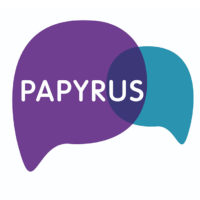Depression
-

From punk rock to academic heavyweight
While at university Edmund became fascinated by behaviourist approaches to psychology which bring together philosophy, methodology and psychological theory.
Read more -

Machine learning approach predicts suicide risk
A study has evaluated the performance of machine learning on routinely collected electronic health records, as a possible approach to accurately screen and detect adolescents at risk of making suicide attempts.
Read more -

Violent self-harm may predict subsequent suicide
Researchers in Sweden have found that violent methods of self-harm requiring hospitalization may indicate high risk of future suicide in adolescents and young women.
Read more -

PAPYRUS – working for prevention of suicide in young people
Every year many thousands more attempt or contemplate suicide, harm themselves or suffer alone, afraid to speak openly about how they are feeling. PAPYRUS strongly believes that many young suicides are preventable.
Read more -

Navigating an unfamiliar world: how parents of young people that self-harm experience support and treatment
Participants described a range of reactions to treatment and support for themselves and the young person. We identified three main themes: attitudes towards the young person, practical aspects of help and the need for parents to be involved.
Read more -

Place children and young people at the heart of the strategy – A recent call by a joint UK Select Committee
In their recent 1st joint Select Committee report, May 2018, the Education, Health and Social Care Committees call upon the government to take a stronger stance on child and adolescent mental health and to join up the appropriate services in a way that places children and young people at the heart of its strategy.
Read more -

Suicide risk in the young: what, how and who to study
Suicide is the second leading cause of death in children and adolescents and occurs at a higher rate in this population than in any other age group.
Read more -

The family environment mediates risk of self-harming
Non-suicidal self-injury (NSSI) constitutes any deliberate physical injury to oneself that is not life-threatening. It is a behaviour that commonly starts during adolescence. Childhood family adversity (CFA) is associated with NSSI, but the risk pathways between CFA and NSSI are unclear.
Read more -

Clinical characteristics of adolescents referred for treatment of depressive disorders
Low mood and depression often emerge during adolescence and are associated with long-term difficulties including increased risk of developing other mental health disorders, educational underachievement, low income/unemployment, and risk of suicidal behaviour.
Read more -

Self-Harm & Suicide Issue – Foreword from the Editor
As a clinician, it certainly does feel that more and more young people are being referred, following self harm or with suicidal ideas, to the CAMHS service I work in. This nationwide increase in numbers is acknowledged in recent government reports, which are summarised in this edition.
Read more